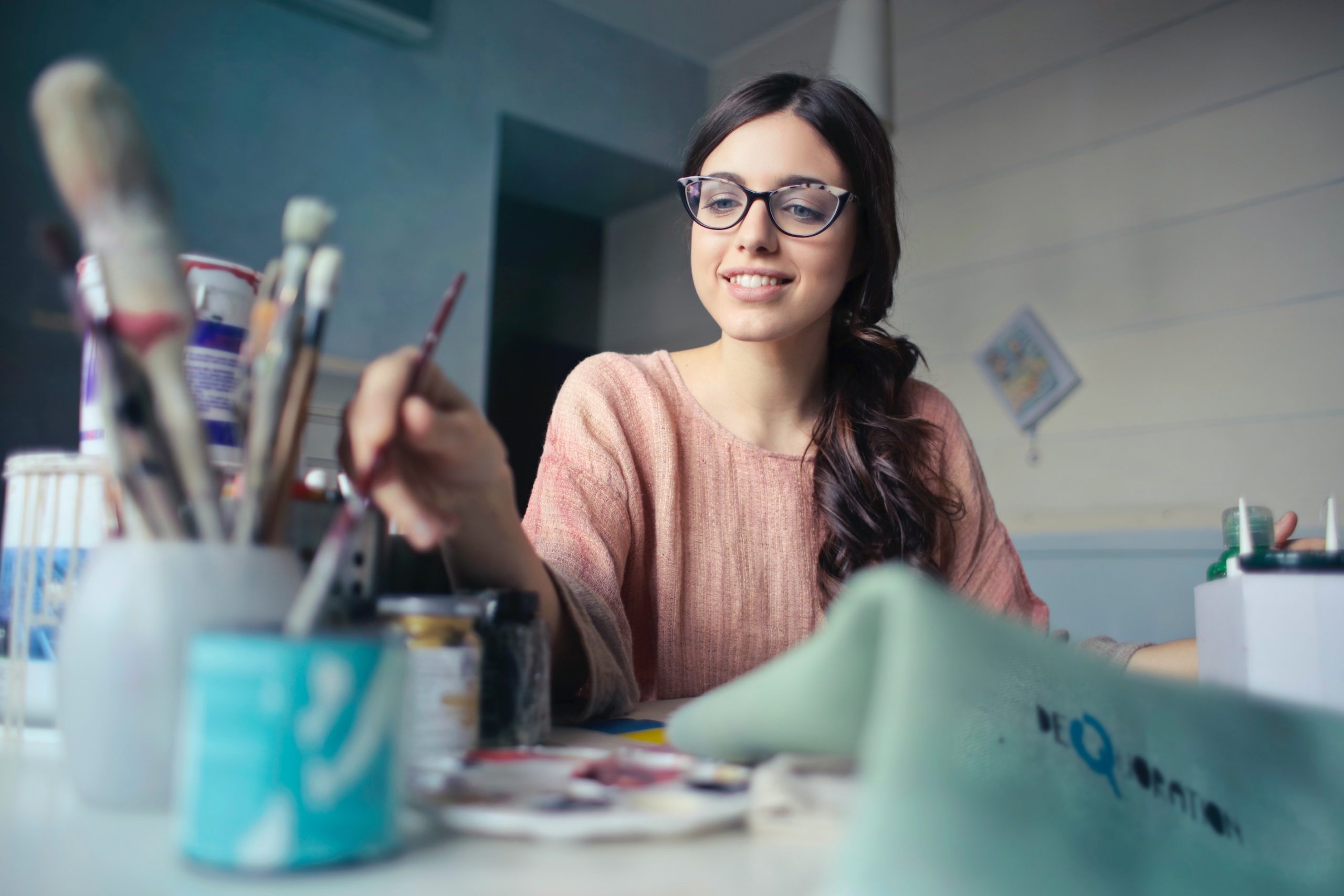Contents
Art Therapy Exercises – Easy, Fun, and Relaxing
Art therapy is a form of therapy that utilizes artistic expressions and exercise as a way to heal and relax. It is an exploration of creativity and self-expression. While most therapies rely on clear verbal communication, art therapy exercises can be rather abstract and indefinitive in comparison. Art has always been a powerful means of expression beyond words. So if you’re stuck with expressing your feelings verbally, this can be a helpful healing solution. You can also read our post, The Power of Self-Expression – An Intro to Art Therapy, or Dance to De-Stress: Does Dancing Release Serotonin? to get a better idea of some of the therapeutic benefits of artistic expression.
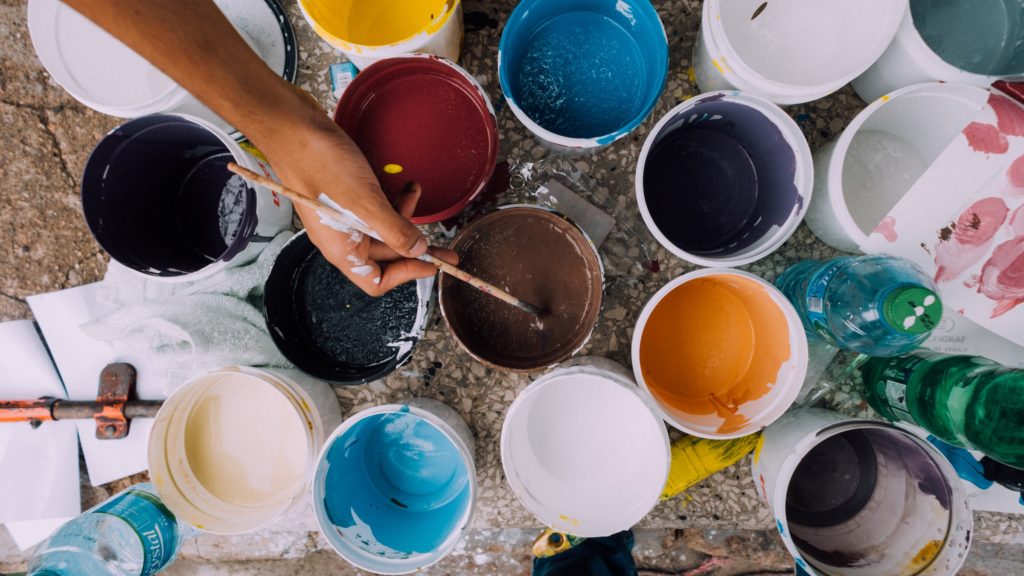
The term ‘therapy’ makes it sound formal and complicated. However, in reality, you don’t need to be an artsy person or have any experience in art to try these art therapy exercises. In fact, the less knowledge you have in art, the easier it will be to let it all out. This is because we are often confined to the preconceived notions of how “art should look”. This article lists a few fun activities that you can easily try at home on your own.
If you would like to learn more about art therapy as a concept and its therapeutic benefits, check out the article below.
1. Visual Journaling
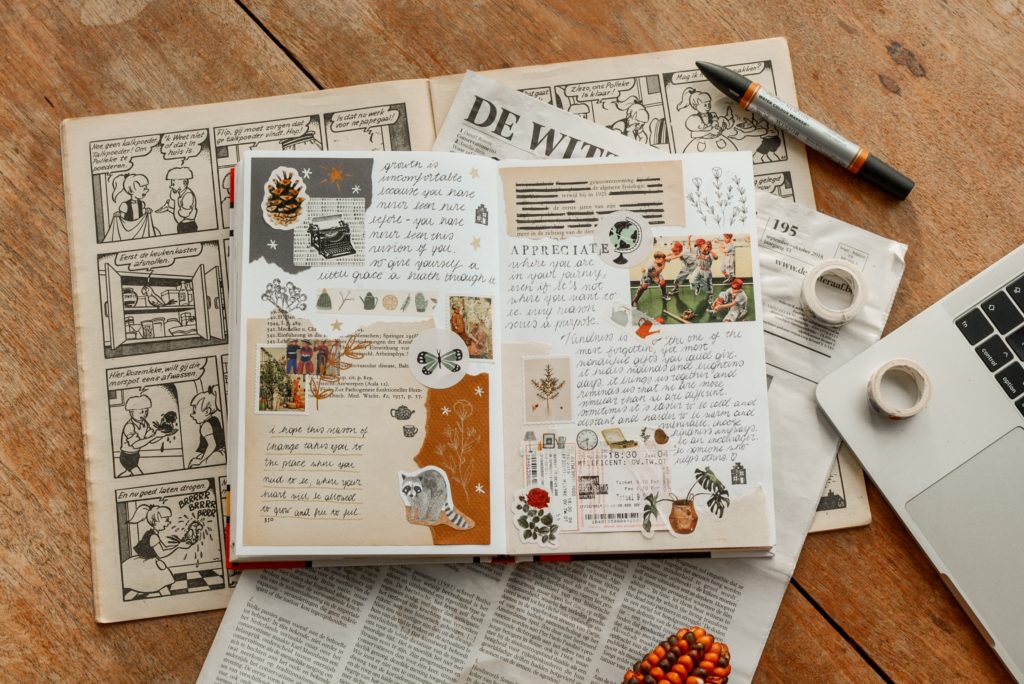
Visual or creative journaling is a form of journaling that extends beyond verbal writing. This art therapy exercise in creativity can be a combination with words, but usually, the main means of expression is focused on the visual language. You can draw, cut, paste, color, and scribble however you feel – explore your creativity! In fact, Carl Jung, known as the founder of analytical psychology, kept a visual journal. This was because he believed it connected with his inner feelings and subconscious thoughts. Studies show that keeping visual journals is especially helpful for trauma, loss, and stress. Moreover, some people choose to keep multiple visual journals with different themes and purposes. It’s a private safe space for you to explore your thoughts and share your feelings. A notebook won’t ever judge, so there’s nothing to hold you back from creating an open and honest dialogue in it!
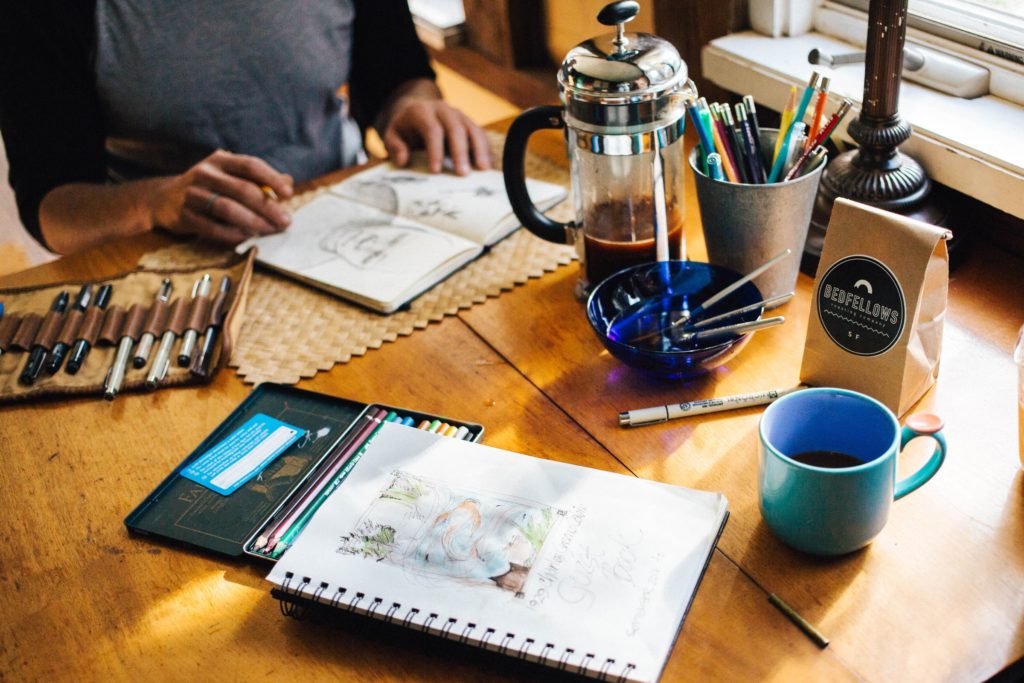
Materials: A blank notebook for journaling, markers, pens, pencils, photos, cut-outs, glue, and anything else you’d like to include. There are no limits on what materials you can use.
Start keeping a regular record of yourself in a visual format through this journal. If you are unsure of how to start, search keywords such as “visual journal ideas” or “creative journal ideas“. This will give you plenty of options to play around with and explore your creativity.
2. Create a Visual Music Piece
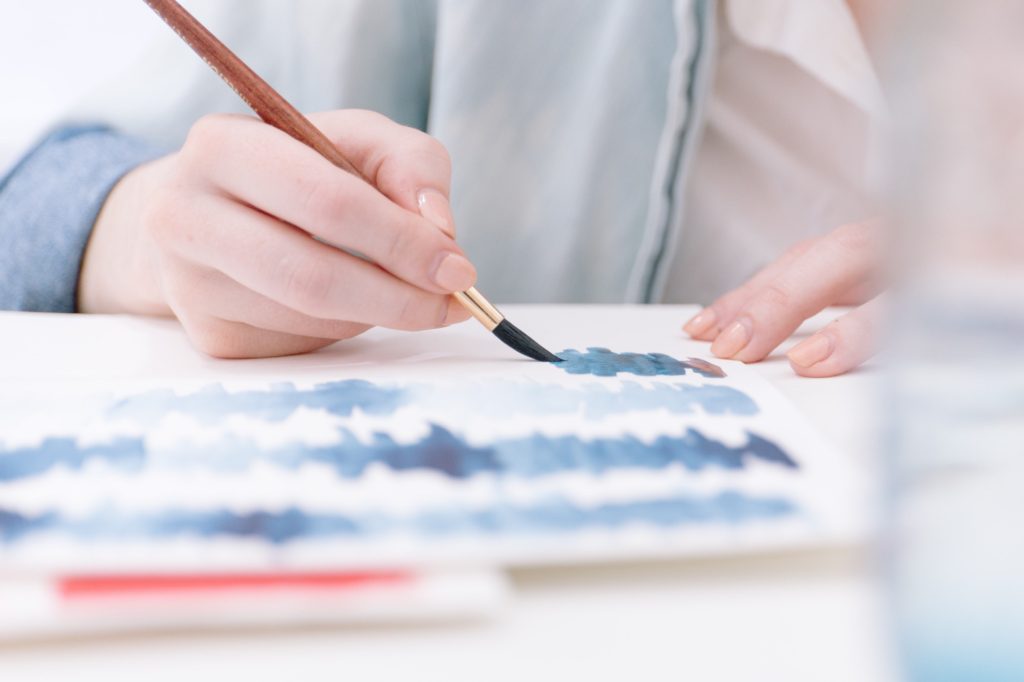
Are you usually more of a sound/music person than a visual? Then this is an excellent way to deepen your relationship with music while increasing sensory awareness and encouraging emotional expressions. Lyric-free instrumental music is considered most effective in this exercise because lyrics can distract from the relaxation process.
Materials: Blank paper, markers, pens, brushes, watercolor paint (A fluid coloring medium is highly recommended), and lyric-free instrumental music to listen to.
First, relax and pay attention to the sounds of the music to get into it. Then, choose one or more of the art therapy exercises below to try and create your art piece.
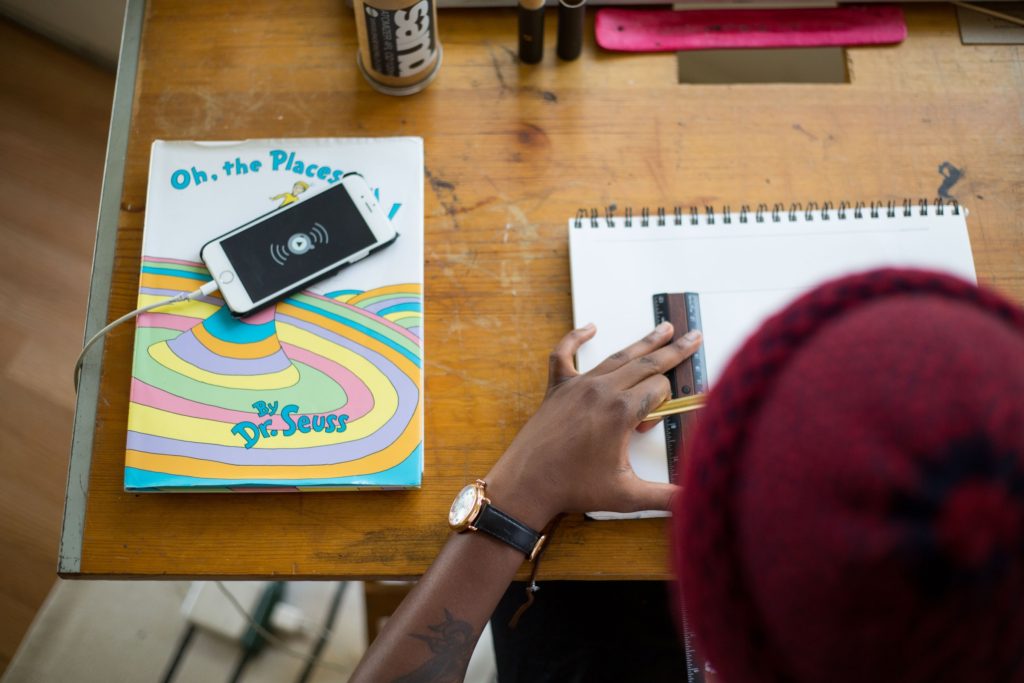
- Imagine what the music would look like in abstract colors, shapes, and lines. If you prefer a more definable image, you can imagine a story or symbol that comes to mind about the music. Paint it all out – and let your inner creativity shine through. There are no restraints in how you can picture the music or what the sounds mean to you.
- Simply put your pen onto the paper, and move it in sync with the rhythm matching the music. Soft rhythms may encourage you to draw smooth waves, while fast sharp rhythms may direct you to sharp short straight lines. Color and thickness of the lines can also play a role in expressing the visualized rhythm.
- Tune into emotions and sensations that arise as you listen to the music. What feelings emerge as a response to this music, and what does that look like? Paint and draw out these elements individually or as a cohesive piece that comes together as an image.
3. Draw in the Dark – Free Yourself From Restrictions
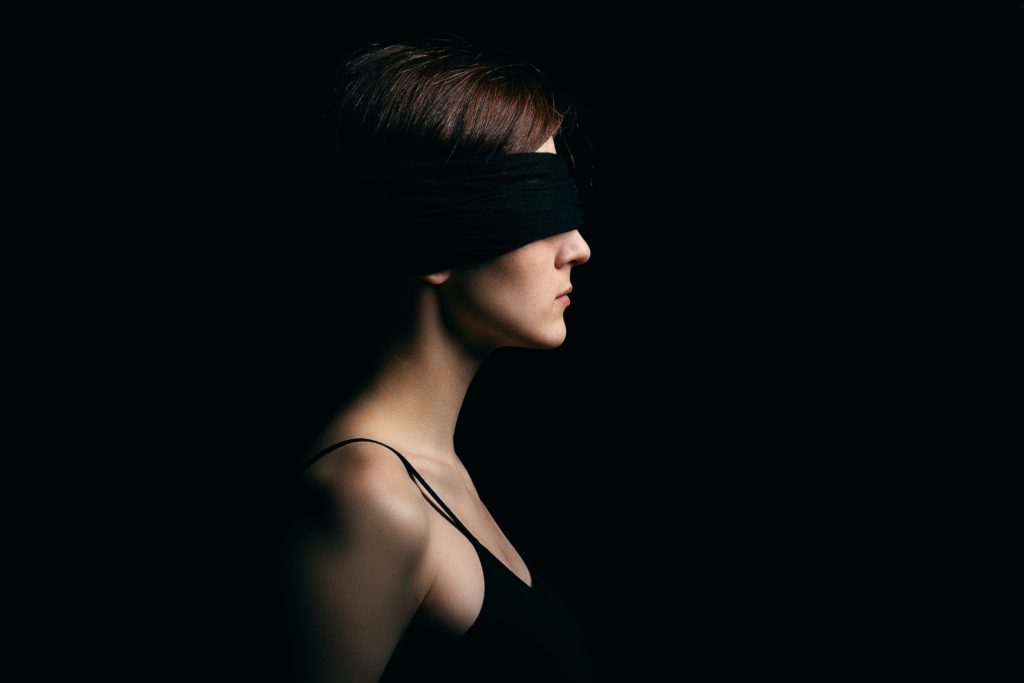
If you are feeling nervous or pressured about how the ‘looks’ of your artwork will turn out, then this is the perfect art therapy exercise for you! Try this activity in complete darkness, or with a blindfold if necessary. Taking away your visual sensory will silence the judgment of your inner critic, therefore allowing intuition and other sensories to take over the process.
Materials: Blank paper, markers, pens, and crayons.
- Create a dark setting in which you have no vision, or blindfold yourself.
- Either preselect a color and medium that resonates with you or choose a medium in darkness using your intuitive sense of touch.
- Take a moment of mindfulness to pay attention to your breath and body. Imagine a chord from your heart connecting to your choice of medium in your hand.
- Draw – you can draw an image that comes to mind, a sense of feeling, or just enjoy the various movements of your hand against the paper. Don’t think about the outcome. Let your body movement and feelings take over – your inner creativity will shine through.
- Take a look and surprise yourself when you finish! No need to judge if it’s good or bad because the focus is on the experience of mark-making.
4. Map Your Future – A Vision Board
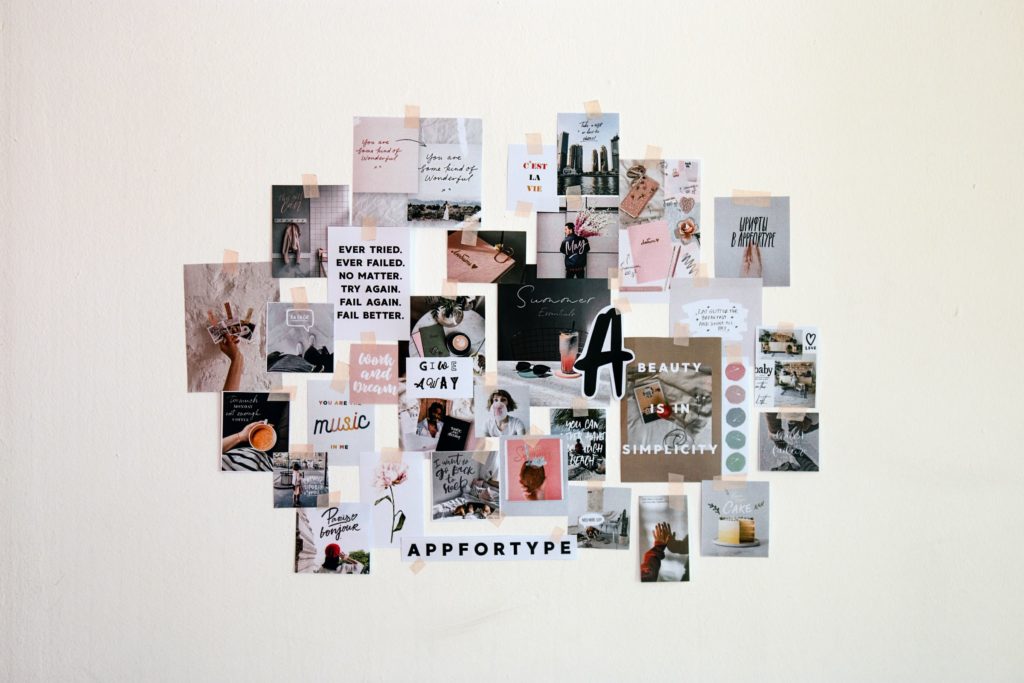
Have you ever dreamt of what life could be like? In fact, a vision board serves as a perfect motivational reminder of your inspirations and aspirations. In positive psychology, visualization is known to assist problem-solving while improving mental and physical health. As a matter of fact, deliberately aiming your intentions towards your desired experience of the future creates better success rates. Professional athletes also commonly use visualization techniques as part of their mental training. Putting yourself in the headspace of an ideal future can also act as a “mental vacation” experience. If you feel a bit stuck and unmotivated at the moment, this could be a good activity to try to boost your sense of creativity and motivation.
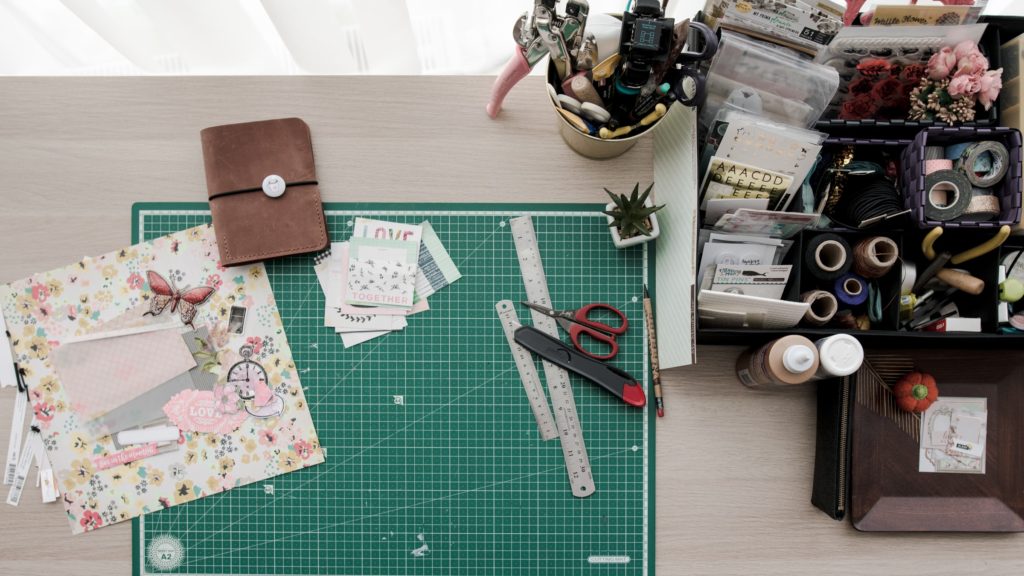
Materials: Poster size paper board, markers, pens, scissors, glue, and a collection of words and images of your inspiration and dreams.
- Print out or cut out your collection of images and words so that it’s prepped for collaging.
- Layout everything on your board. There are no rules on how to make it, but make sure that it conveys the feelings you want to achieve when you look at it.
- Collage the pieces on with your glue, add in your own drawings, or handwrite words as needed.
- Put it in a visible spot as a daily reminder of where you are headed in life. Practice visualizing your dreams as you look at them.
Here’s also an excellent video on how to create a vision board explained by a certified art therapist.
5. Gift an Expressions of Gratitude
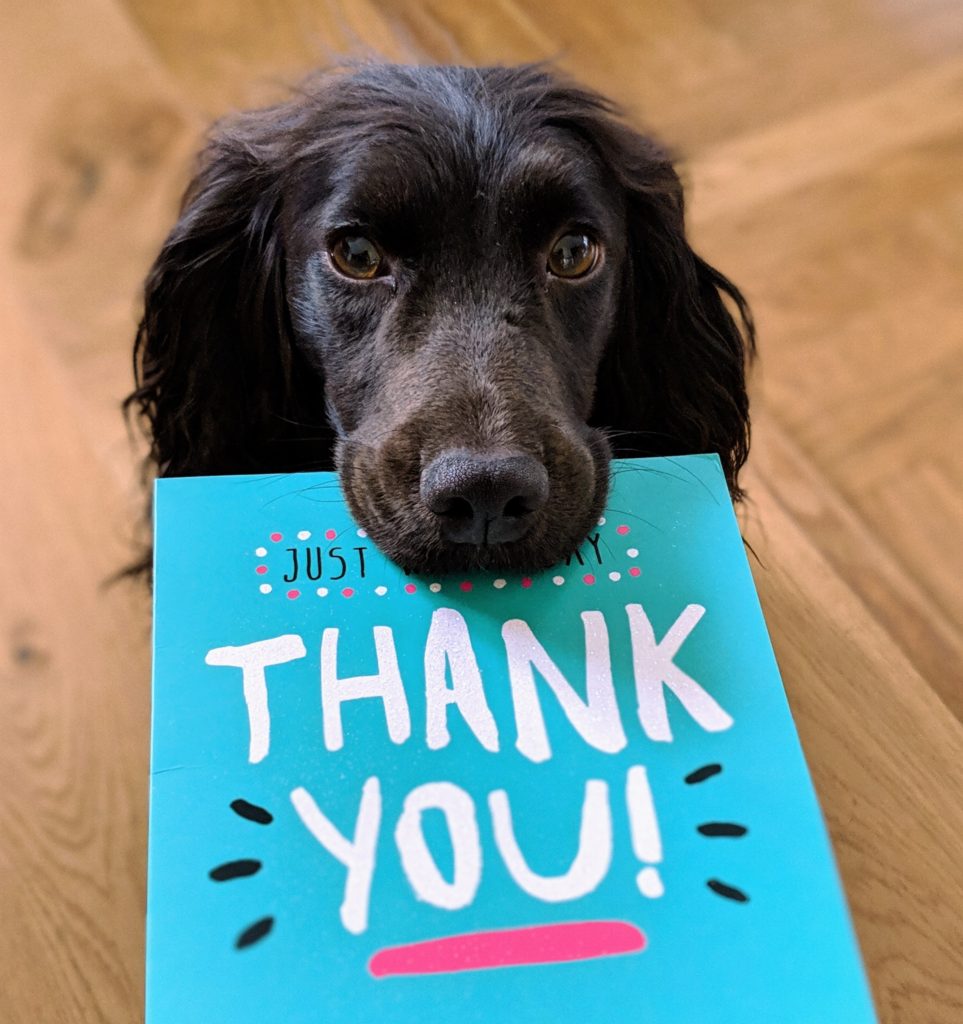
Research indicates that thank you letters have positive psychological effects on both the sender and receiver. Specifically, focusing on expressions of gratitude can combat depression, ease pain, improve heart health, reduce inflammation, and alleviate anxieties. Long-term habits of writing out gratitude also create powerful changes in our mental and physical health. A thoughtful handwritten letter maximizes the benefit because it requires time to consider your thoughts of gratitude deeply. If so, what better way than to combine your thank you’s with your personal touch of creativity? This art therapy exercise can also help you nourish your relationship with the people you love.
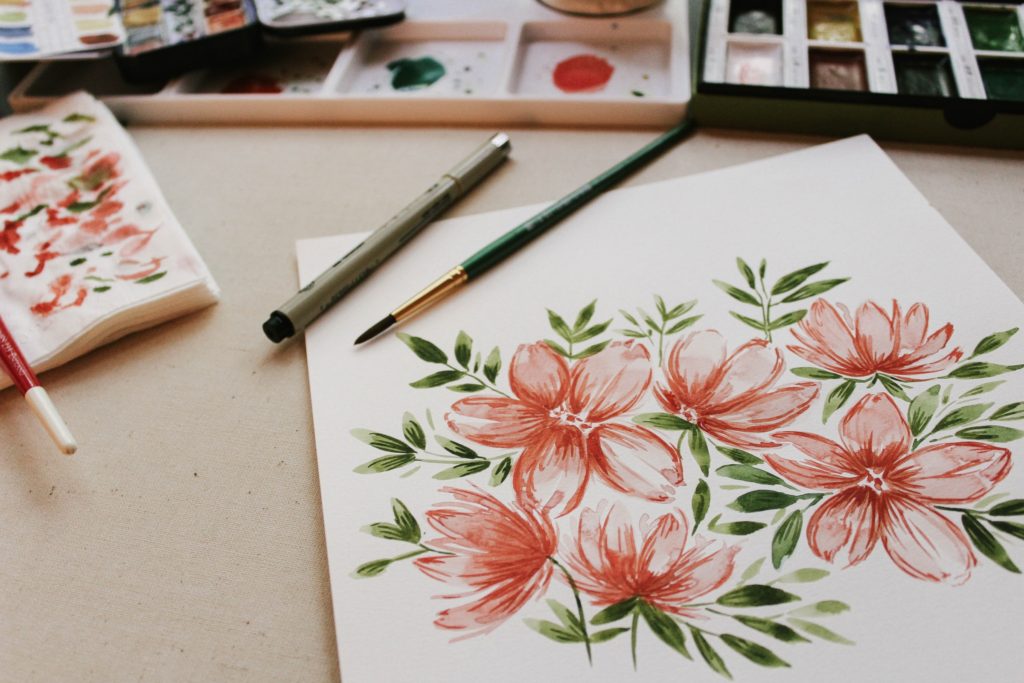
Materials: Card stock paper, markers, pens, collage materials, glue, postage stamps, and envelopes.
- Think of someone who you want to express your thanks to. Vividly reflect on the beautiful experiences you’ve shared with them and the feeling of gratitude towards them.
- While reflecting on these positive memories, think of the colors, images, and words that connect with what you felt during these experiences.
- With the inspirations and materials available, create an original postcard with drawings and collages. Include your story of appreciation so that the receiver understands why they are being thanked.
- Put your art postcard inside an addressed and stamped envelope. You can add more and customize the envelope too if you prefer.
- Mail it out to the person.
One Step Further in Art Therapy Exercises
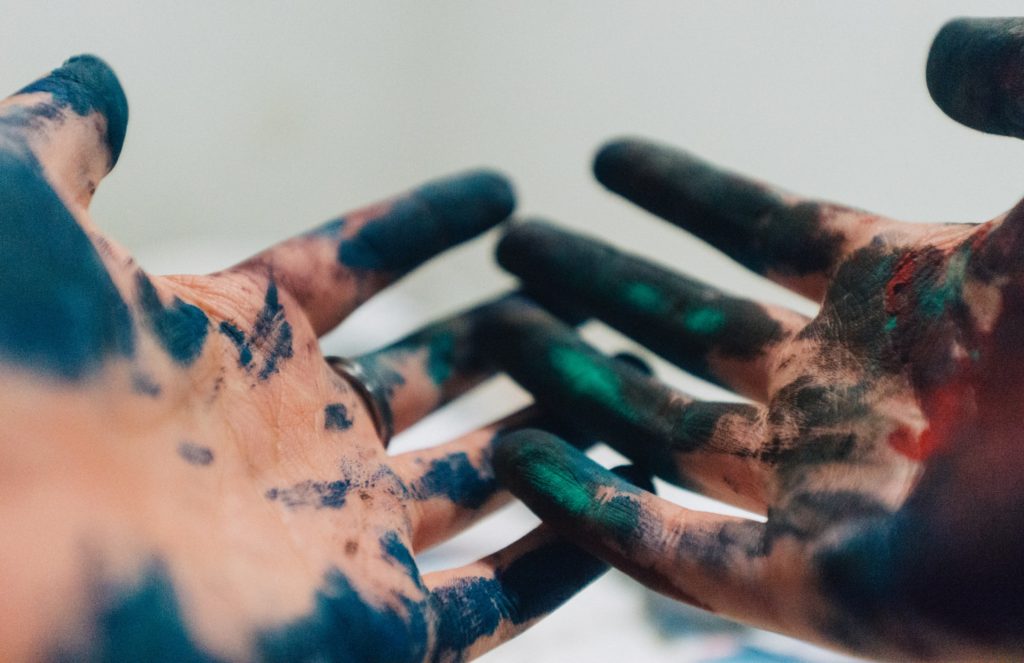
If you seek further deep healing through art therapy exercises, I encourage you to participate in a group or individual session guided by a certified art therapist. I’m no art therapist, so I’ve compiled these art therapy exercises as a suggestion based on common practices among art therapy communities. Professional art therapists are capable to further assist you if you want to explore deeper.
As an additional activity to all of these art therapy exercises, you can have a dialogue with yourself and the completed artwork. Try writing about your experience and results on a piece of paper. You may find words for what was hard to verbalize before. Perhaps you will also discover hidden emotions deep within that were hard to recognize. It’s okay if you still cannot find adequate words to verbalize everything. Focusing on the art will at least give you a new refreshing perspective and a pleasant outlet for self-expression and creativity.
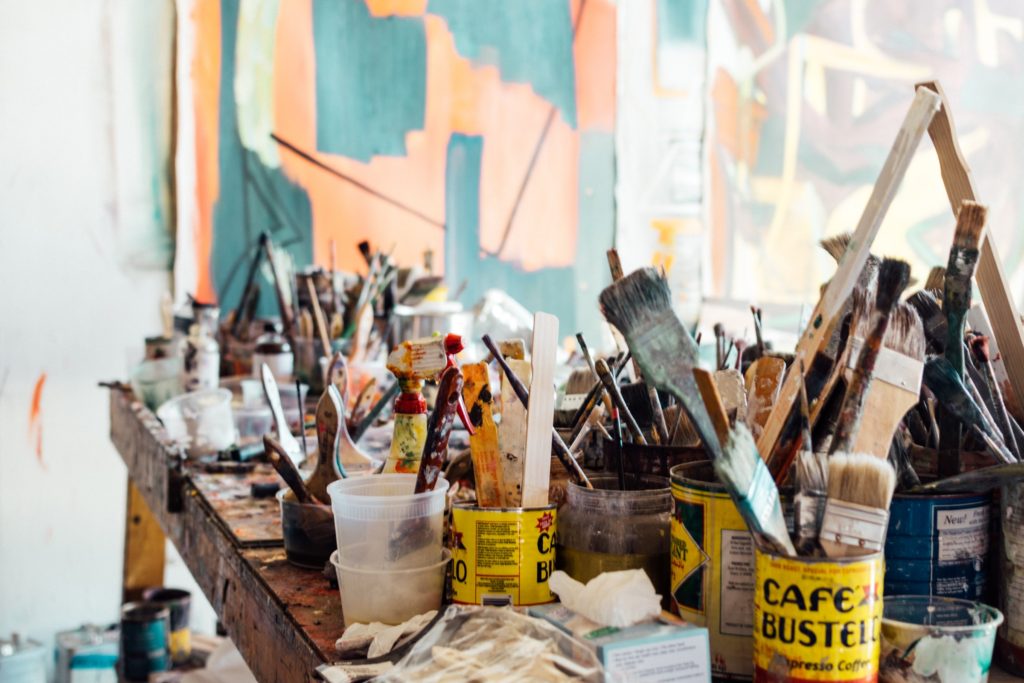
→ Looking to improve your mental health? Try the SELF MIND app FREE for 1 week!
If you’re looking for more tips on how to care for your mental health, check out some of our past blog posts!
References:
A Thanksgiving Art Therapy Exercise For Groups or Individuals: Thank You Cards. (2015, November 26). Retrieved June 29, 2020, from http://www.arttherapyblog.com/art-therapy-activities/art-exercise-groups-individuals-thank-you-cards/#.XvmBFJMzbzV
Baumgartner, J. (2011, November 8). Visualize It. Retrieved June 30, 2020, from https://www.psychologytoday.com/us/blog/the-psychology-dress/201111/visualize-it
Frank, P. (2016, September 26). 37 Art Therapy Techniques For De-Stressing This Season. Retrieved June 29, 2020, from https://www.huffpost.com/entry/art-therapy-techniques_n_56562017e4b072e9d1c19f9b
Hagan, P. (2018, November 19). How saying thank you can help to ease depression. Retrieved June 29, 2020, from https://www.dailymail.co.uk/health/article-6407319/How-saying-thank-help-ease-depression.html
Harvard Health Publishing. (2018, December). Writing a thank-you note is more powerful than you think. Retrieved June 29, 2020, from https://www.health.harvard.edu/mind-and-mood/writing-a-thank-you-note-is-more-powerful-than-you-think
Malchiodi, C. (2013a, October 23). Visual Journaling, Self-Regulation and Stress Reduction. Retrieved June 30, 2020, from https://www.psychologytoday.com/us/blog/arts-and-health/201310/visual-journaling-self-regulation-and-stress-reduction-0
Malchiodi, C. (2013b, November 19). Top Ten Art Therapy Visual Journaling Prompts. Retrieved June 29, 2020, from https://www.psychologytoday.com/us/blog/arts-and-health/201311/top-ten-art-therapy-visual-journaling-prompts
Mehlomakulu, C. (2017, May 27). Music and Mindful Art. Retrieved June 29, 2020, from https://creativityintherapy.com/2017/05/music-mindful-art/
Shultis, J. (2018, January 3). 20 Art Therapy Activities You Can Try At Home To Destress. Retrieved June 29, 2020, from https://www.lifehack.org/articles/lifestyle/20-art-therapy-activities-you-can-try-home-destress.html
Wong, Y. J., Owen, J., Gabana, N. T., Brown, J. W., McInnis, S., Toth, P., & Gilman, L. (2016). Does gratitude writing improve the mental health of psychotherapy clients? Evidence from a randomized controlled trial. Psychotherapy Research, 28(2), 192–202. Retrieved from https://doi.org/10.1080/10503307.2016.1169332
Youhjung. (2020, January 9). How to Make a Vision Board – An Art Therapy Activity. Retrieved June 29, 2020, from https://www.thirstyforart.com/blog/vision-board-art-therapy-activity

